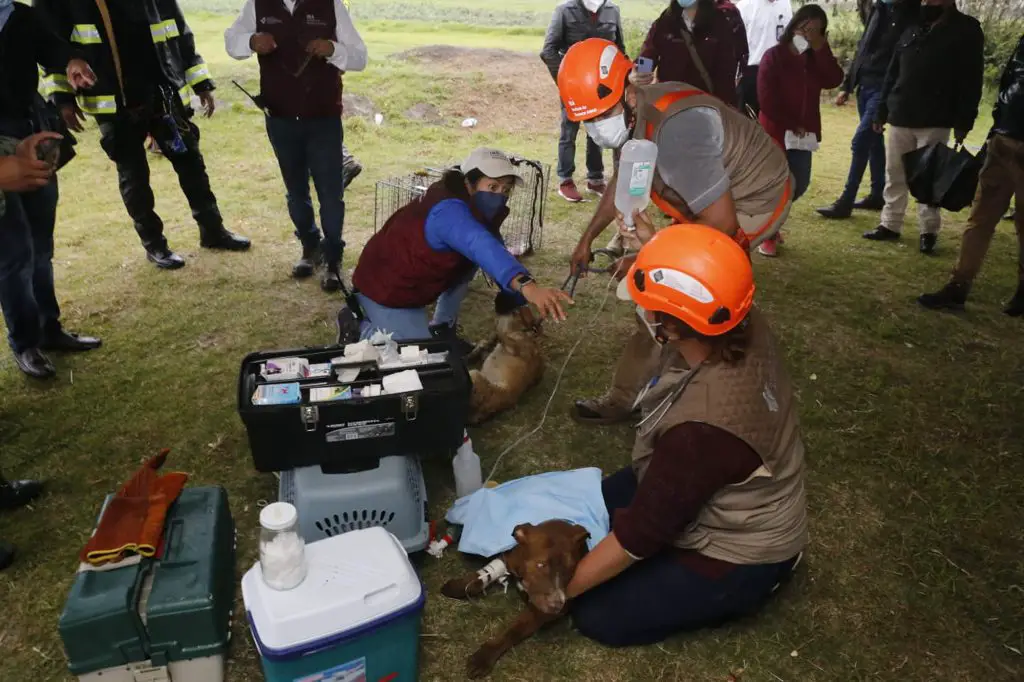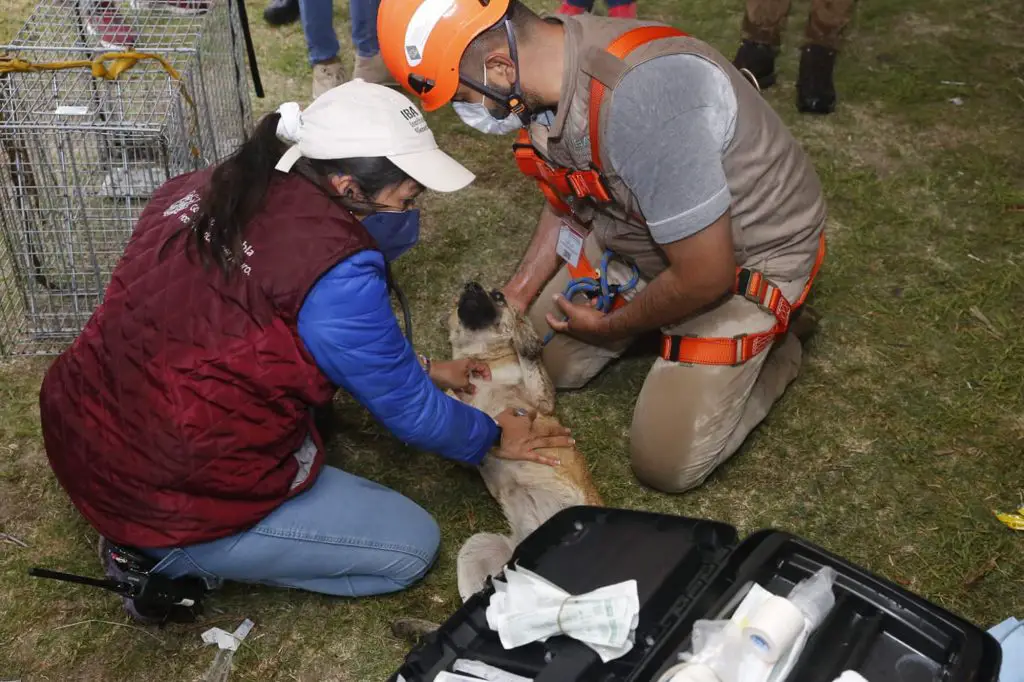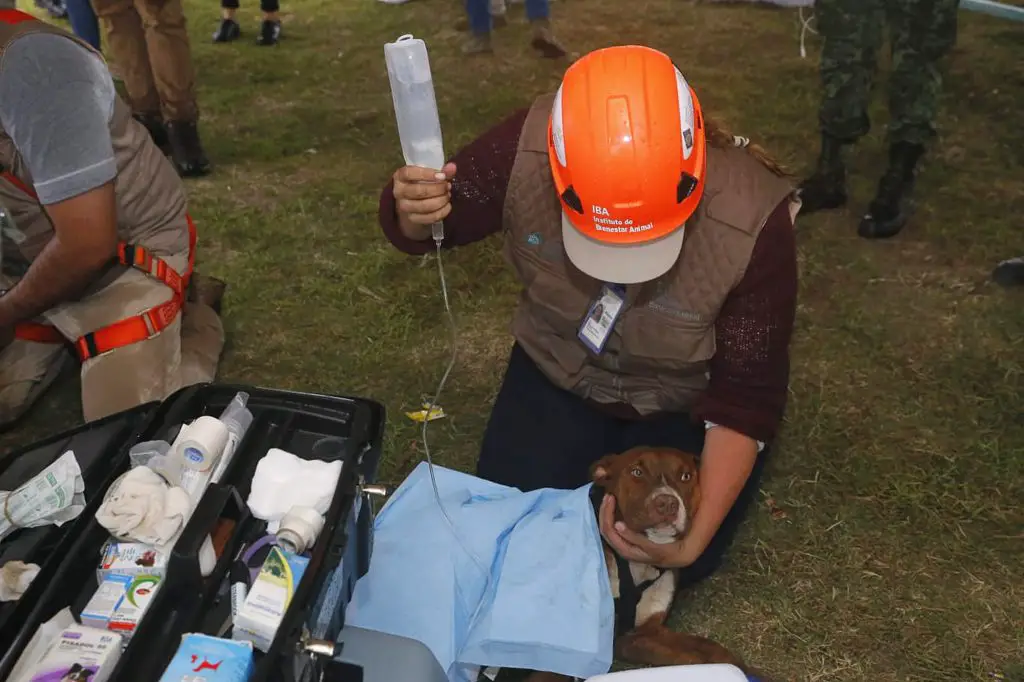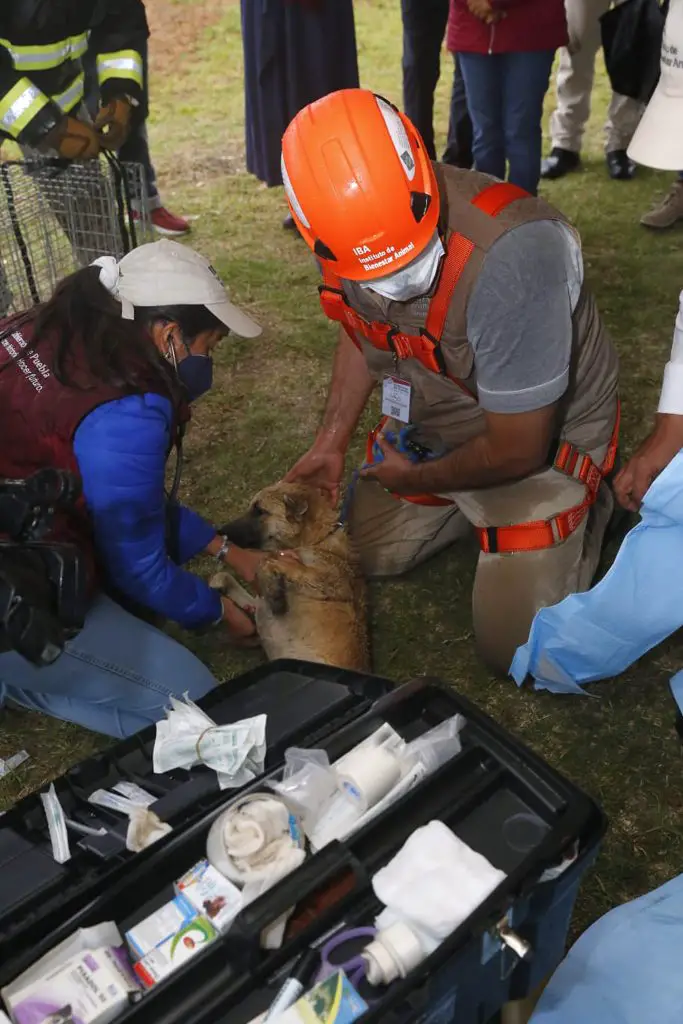Two dogs that fell into a huge sinkhole in a Mexican field have been rescued.
The sinkhole formed on farmland in the rural region of Santa Maria Zacatepec in the Mexican state of Puebala at the end of May, and the local Civil Protection authority urged residents to not approach the area to prevent any possible accidents.
However, two dogs named Spike and Spay fell into the sinkhole on 7th June.

The Animal Rescue and Life Support Unit (URSVA) posted drone footage inside the sinkhole that confirmed that both dogs were still alive on 9th June.
The footage was viewed 140,000 times in a day and led to calls to rescue the trapped animals from the hole that has already reached 413 feet in diameter.
And now the local authorities have confirmed that they managed to rescue both dogs as of Thursday afternoon.

Spay’s owner Fatima Ortega said she will care for her dog at home as it will need at least two days of treatment at the vets.
Ortega did not rule out the possibility of also caring for Spike until a permanent home is found for the dog.
According to eyewitnesses, Spay was playing with Spike in the field when they both ended up in the sinkhole.

At first it was unclear if they were still alive until URSVA posted the drone footage on social media.
The sinkhole is reportedly around 126 metres (413 feet) in diameter and 20 metres (66 feet) deep.
Regional environment secretary Beatriz Manrique said that the sinkhole started off about five metres in diameter and grew over the following few hours.

Manrique added: “We believe there may be two explanations for the incident, the softening of the farmland as the entire area was cultivated, and the removal of aquifers (an underground layer of water-bearing permeable rock) that softened the subsoil.”
The authorities will now carry out a series of land surveys, a process that could take up to 30 days.
Officials from the National Water Commission, the National Centre for Preventive Programs and Disease Control, and Civil Protection are working together in the area in cooperation with the Puebla state authorities to determine what happened.



